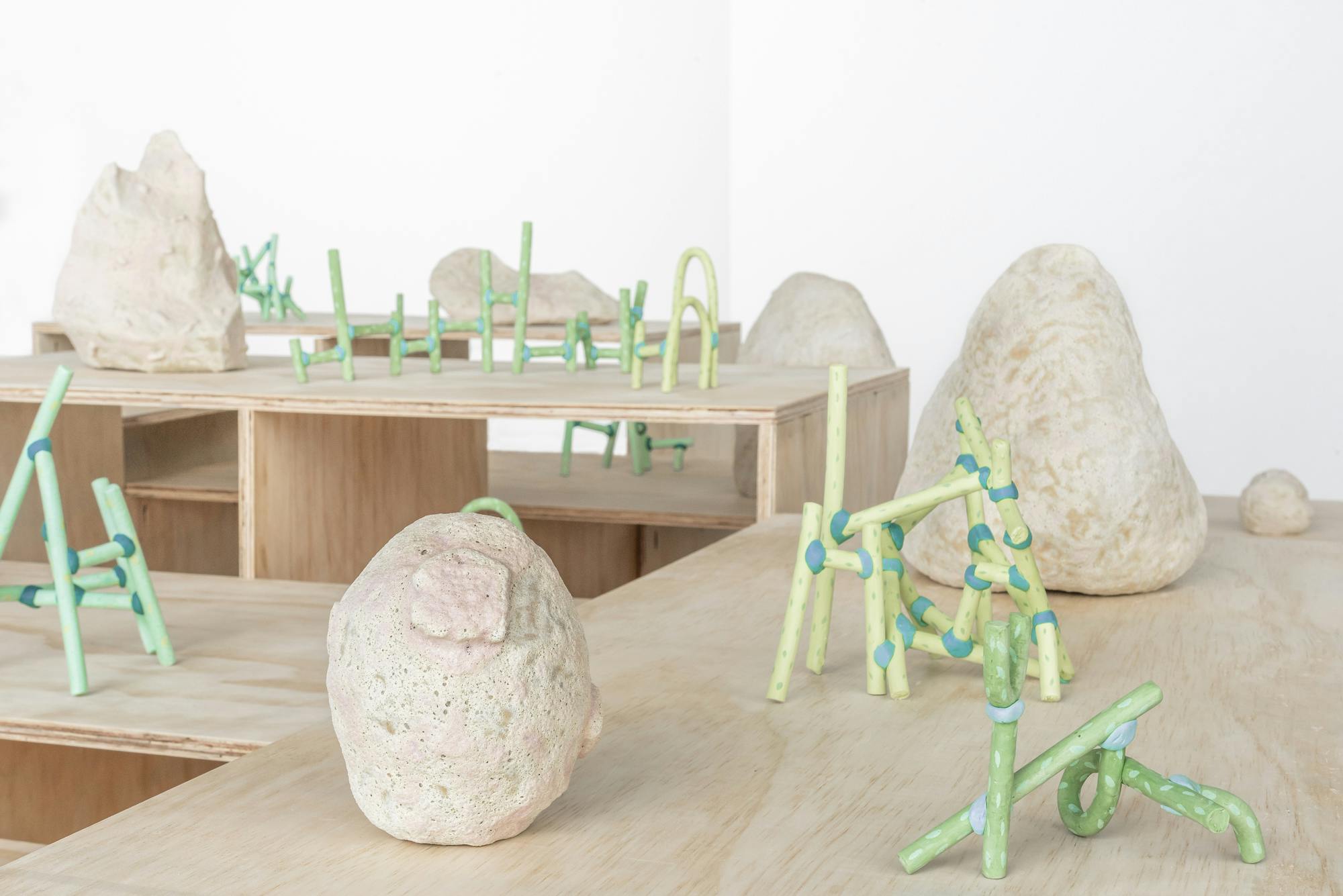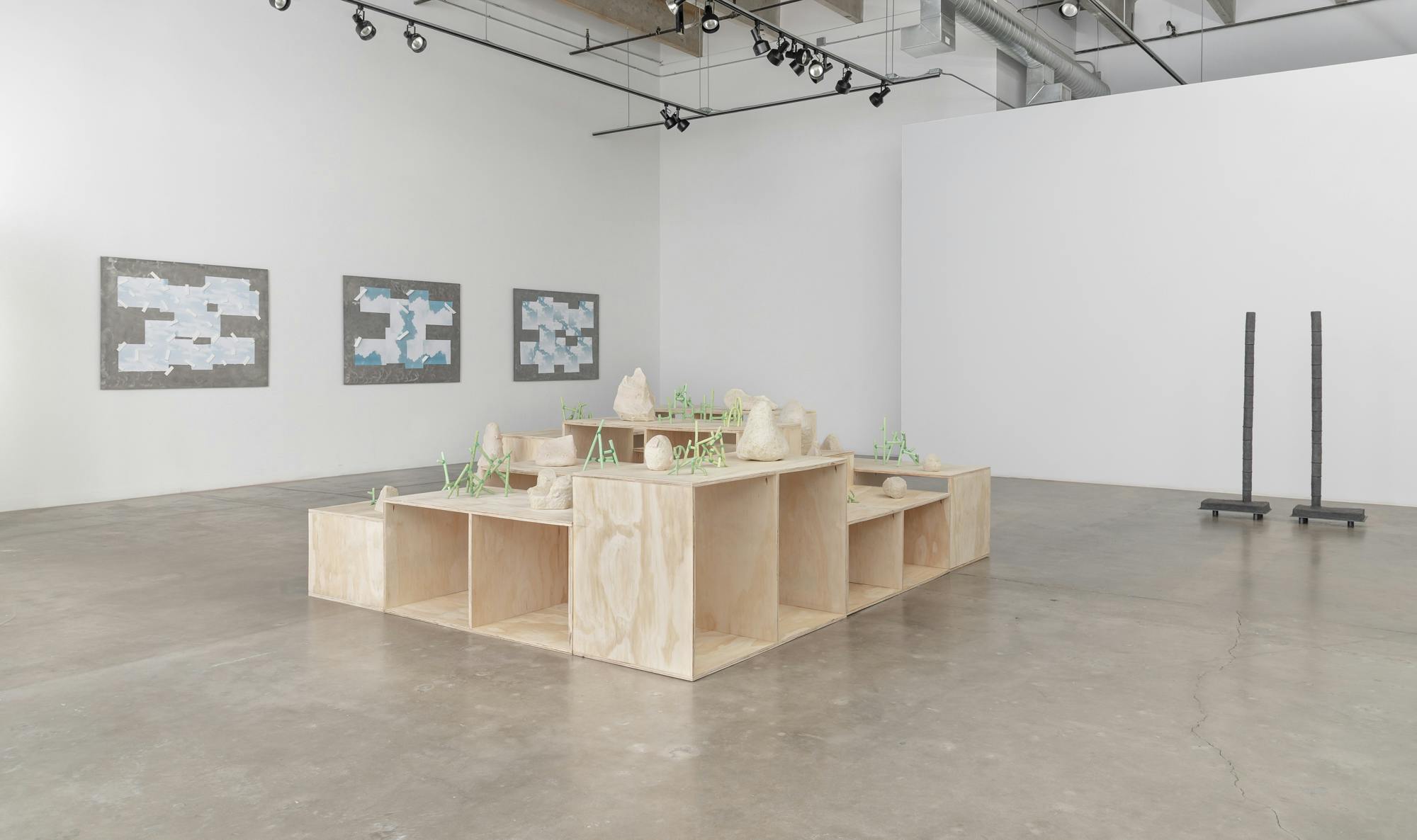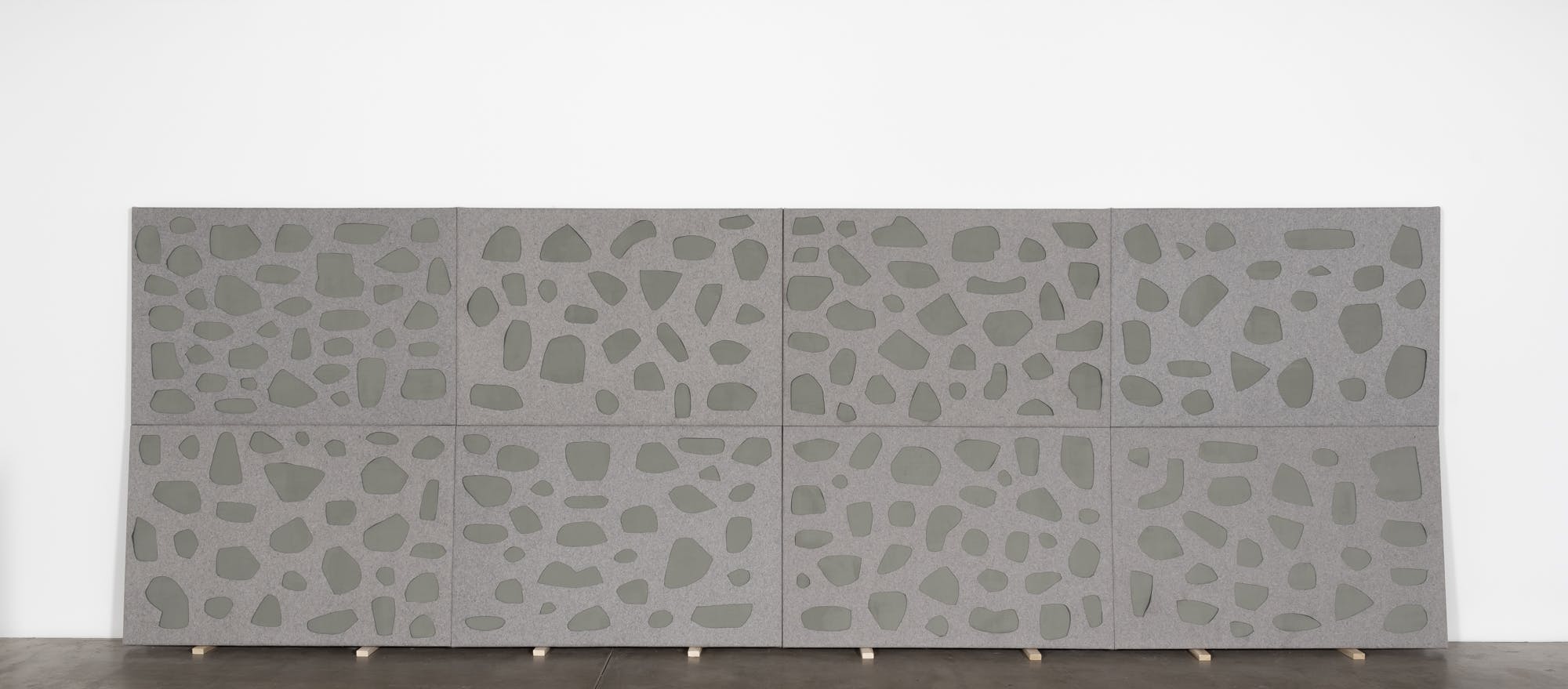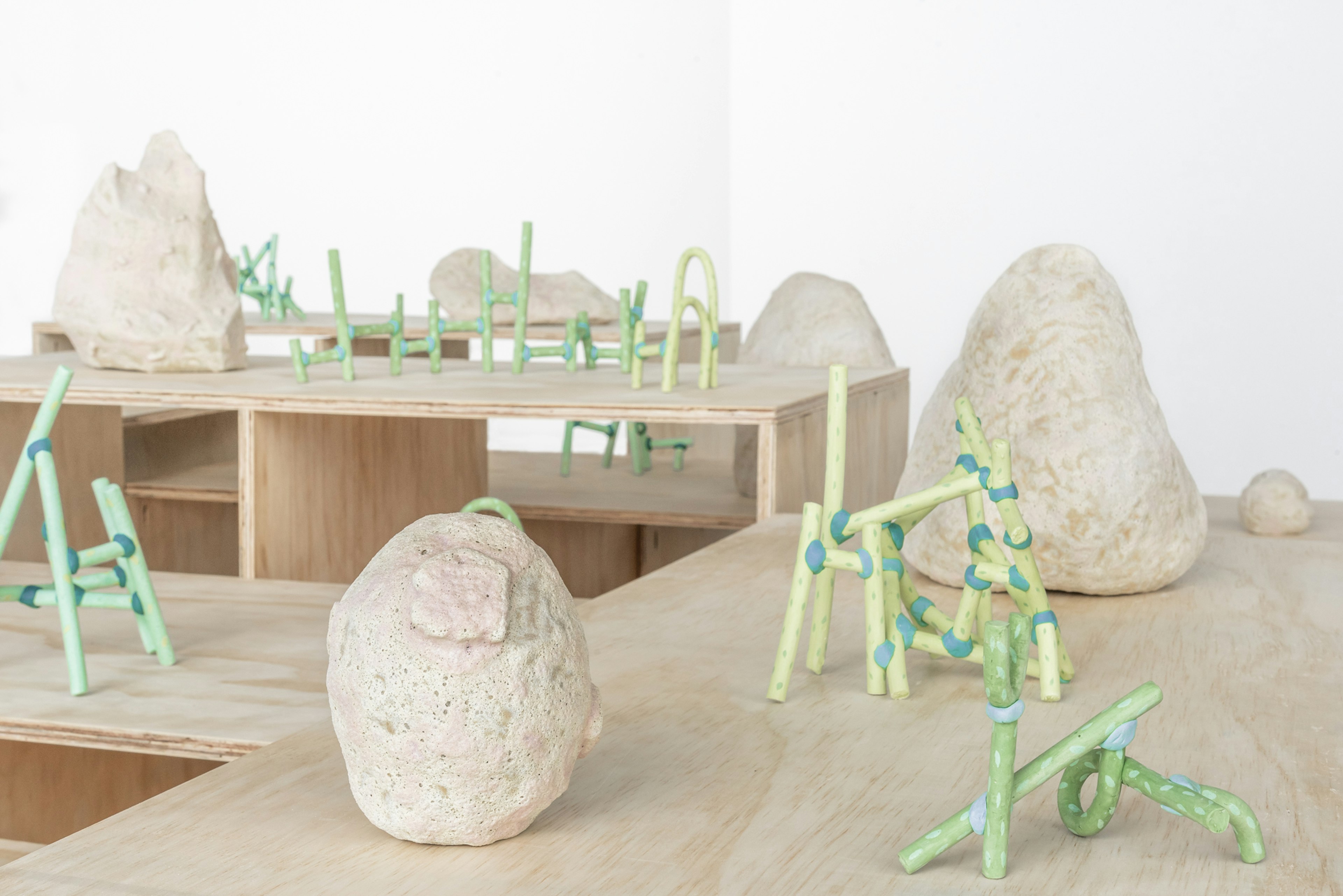Jon Geiger on Valley Boy





We interviewed Black Cube Alum, Jon Geiger, on his Alumni Project that opened at RedLine Contemporary Art Center.
Jon Geiger on Valley Boy
Black Cube: Tell us about your exhibition Valley Boy.
Jon Geiger: Valley Boy consists of 35 new works arranged within the gallery as stand-ins for aspects of the San Luis Valley landscape - there is the valley floor (Boulders & Blossoms), the mountain (The Approach), the horizon (Hondo Condo #1-3), and the human element (Barometer II). The exhibition continues my interest in reacting to both physical and meditative landscapes and features some new departures as well as new editions to some ongoing series such as the Blossoms and Barometer II.
BC: This exhibition is a Black Cube alumni project, can you tell us a bit about your Black Cube fellowship work and how this project relates (or differs) from it?
JG: During my fellowship I created a piece known as ROAM, a 26 foot long neon billboard like structure with five neon tumbleweed forms - illuminated individually to create a perpetual rolling motion. The piece traveled to 5 locations within the state of Colorado and existed on rooftops, parks, next to roads, and parking lots. Like Valley Boy, this work pulls from certain Western icons and is largely influenced by experiences with the landscape. ROAM largely differs from the work in Valley Boy from its process (digitally rendered and outsourced) as well as its use of specific icons such as neon, the tumbleweed, and the billboard. I’d say that since making ROAM two years ago, that my work has shifted to a more abstracted approach to my subject matter. The ROAM is directly related though to a piece in the exhibition titled The Approach. Which is built to the same dimensions as ROAM in order to “feel” a similar sensation to creating a piece I did not physically fabricate.
BC: How did you come to the exhibition title?
JG: Truthfully, I’m not entirely sure how and when I settled on the title and that is often the case for me. It just tends to be this moment and I write it down and that’s what it is. It may of come from the fact that my nickname around the house is Jonboy...
BC: This exhibition is a deconstructed landscape, specifically the San Luis Valley landscape. Can you tell us about how the landscape is deconstructed? What elements of the landscape are you considering here?
JG: So the exhibition is broken down into four major components - the valley floor, the mountain, the horizon, and the human element. In the center of the gallery exist the valley floor in the form of a 12’ x 10’ stepped pedestal ranging from 16” to 32” in height. The pedestal houses thirty ceramic pieces titled Boulders & Blossoms that are abstractions of rock formations and a pencil cactus that resides in my house. The mountains of the SLV are reflected in the piece, The Approach, which similarly erects itself directly from the ground - the patterns and shapes cut out of the stretched wool reflect the boulder fields found above the tree line of SLV’s Mount Blanca.
Hondo Condo # 1 -3 are stand-ins for the horizon line and open sky. They consist of 3 separate sheets of steel with ceramic magnets holding up collages of cloud formations seen in the valley. These works are larger additions of smaller circular pieces I made earlier this year called Hondo Tondo. Hondo within both titles pays homage to an iconic character with said name played by the infamous John Wayne. In the case of the new works, “Condo” refers to Denver’s changing skyline and the shifting I have witnessed over the course of 6 years returning to visit the state. Lastly Barometer II represents the human element. For me in particular I’m pulling from aspects of human involvement that almost blends in with the landscape, i.e. telephone poles, windmills, transformers, windsocks, and antennas. I see Barometer II acting as two lighting rods within the setting - in part as homage to the heavy summer lighting that occurs in the valley.
BC: Can you tell us about the San Luis Valley and your connection to it?
JG: I’ve come to refer to the valley as my adopted home, in large part because my family relocated there on the tail end of completing high school. Having then shortly moved away to go to college, the valley existed in the odd space of familiar but disconnected. Spending a few summers working in the valley and returning for family affairs over time, my connection to the region became much deeper. And, when asked by Black Cube to do a follow up exhibition reflecting on my fellowship I felt focusing my attention to this region of the state was the right avenue to explore.
BC: Do you consider your work sculptural? How do you position it within the field of contemporary art?
JG: I guess so, it certainly doesn’t fall within the traditional functional category associated with ceramics. But really it depends on the work. For example, I obviously see works such as Barometer II existing within the realm of sculpture but the Hondo Condo’s (and previously the Hondo Tondo’s) I tend to label and approach them as collages.
BC: Can you describe your studio?
JG: 3 years ago my wife, Lindsey Dezman, and I bought a house in the Detroit area and expanded the back of our 2 car garage to create a 600 sq ft shared ceramic studio. We also put together a small woodshop in our basement and between both sites have nearly everything we need either in our backyard or in the basement of house. With us both working full time, having the studio so close has allowed us to keep chipping away on projects and make new work for upcoming shows.
BC: Name the most memorable exhibition that you’ve attended.
JG: It’s a bit too hard to pin down one exhibition, but I will say visiting the Louisiana Museum in Denmark, the DIA Beacon, and Walter de Maria’s lightning field have all been very influential art viewing experiences for me.
BC: Aside from the visual arts, what motivates your practice?
JG: I’d have to say my wife Lindsey – it’s a real pleasure and treat to be married to a fellow maker and artist. She is constantly challenging me and pushing me to make new work and certainly keeps me on track when I have big deadlines coming up! And when you have someone equally motivated to make, getting in the studio is not too hard.
BC: What do you watch and/or listen to while working?
JG: I can’t watch anything while working aside from our garden and what else is outside the studio windows. Listening wise I tend to either have some music playing or go without depending upon the mood. Lately it has been Mac Demarco and Yellow Days with some old folk thrown in between. If all else fails, I’ll have good ol NPR streaming.
